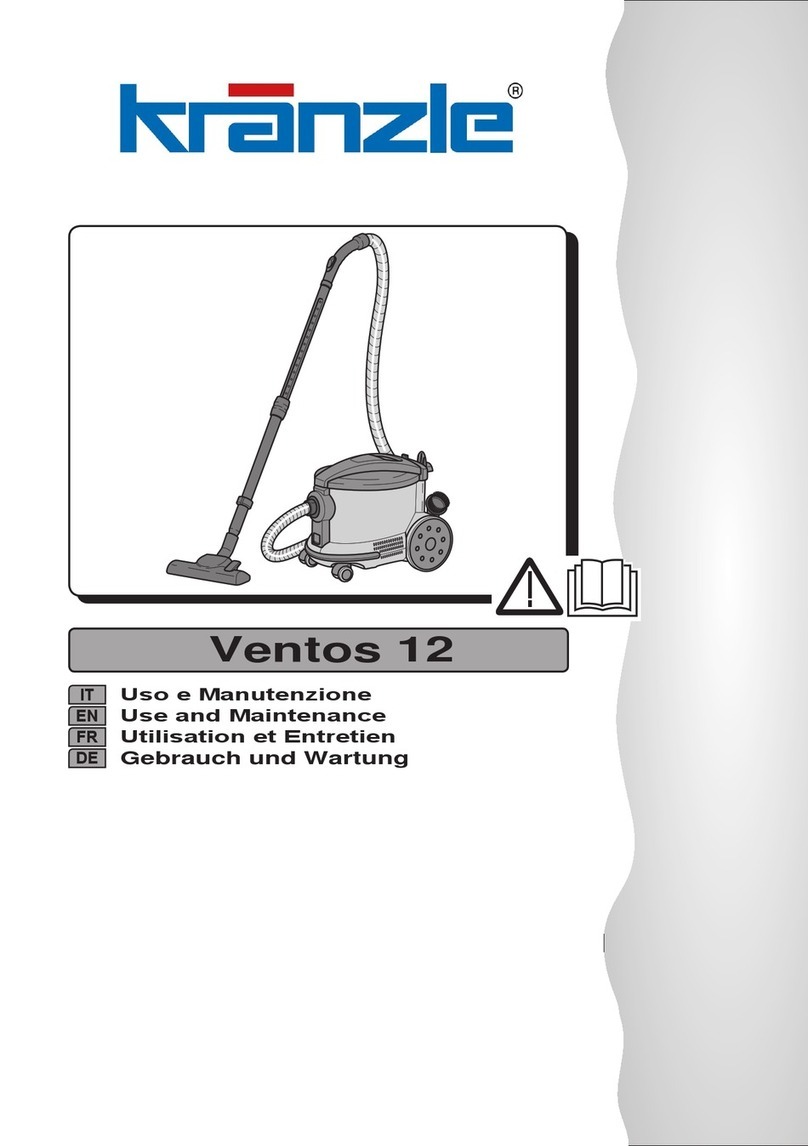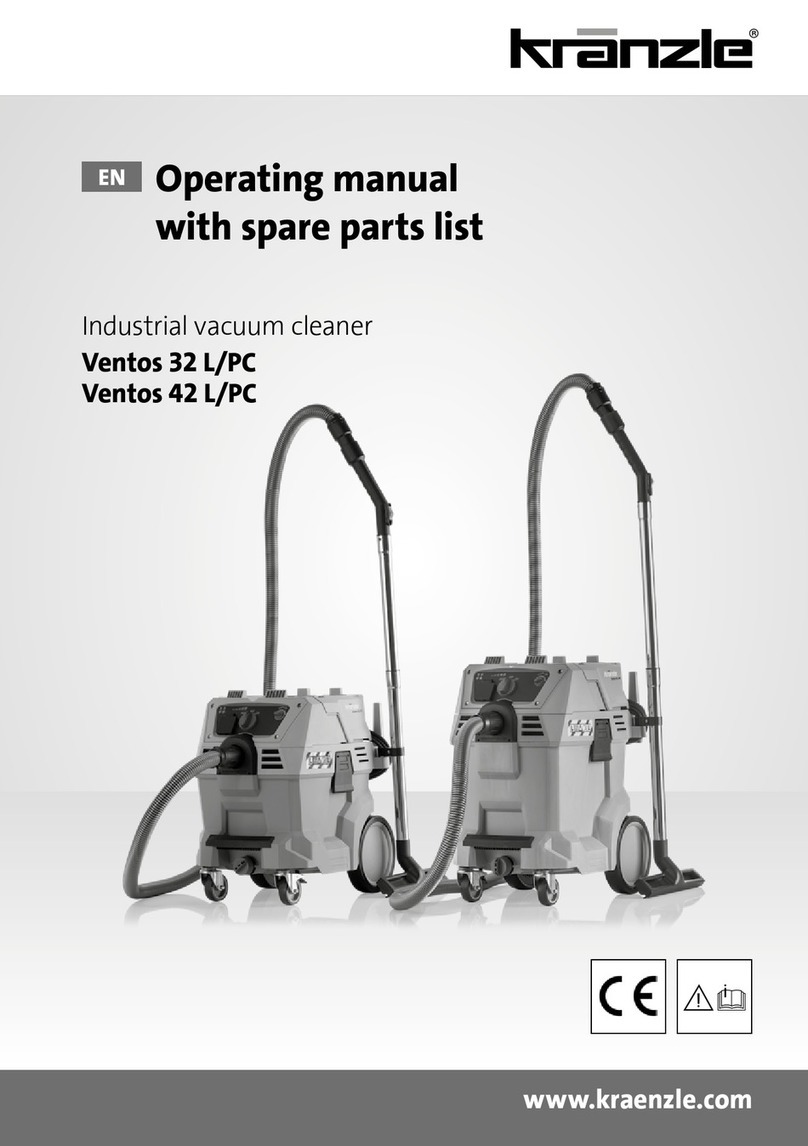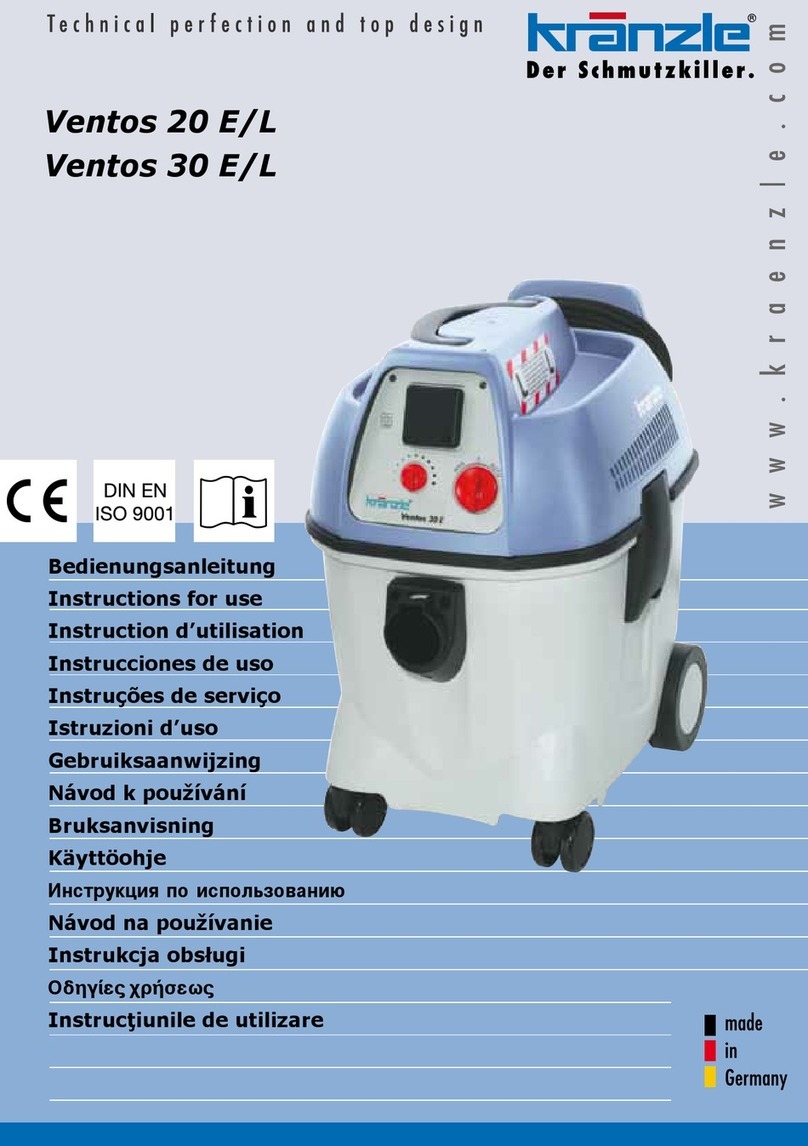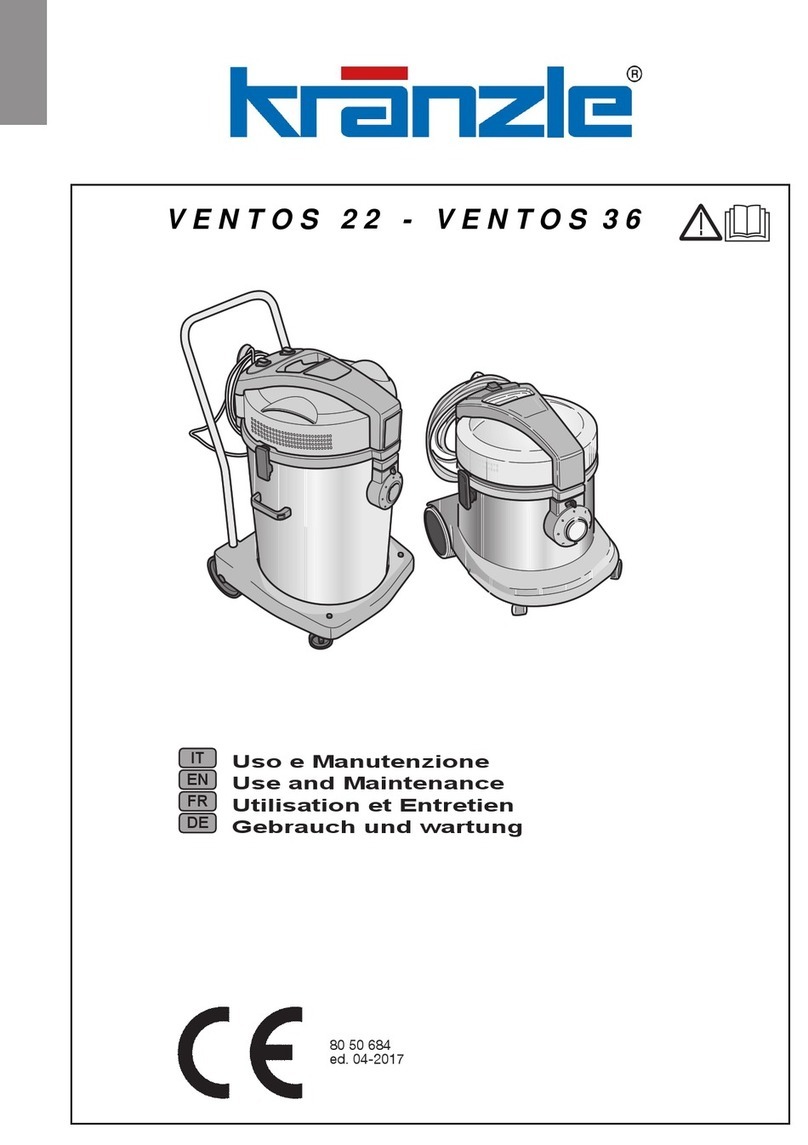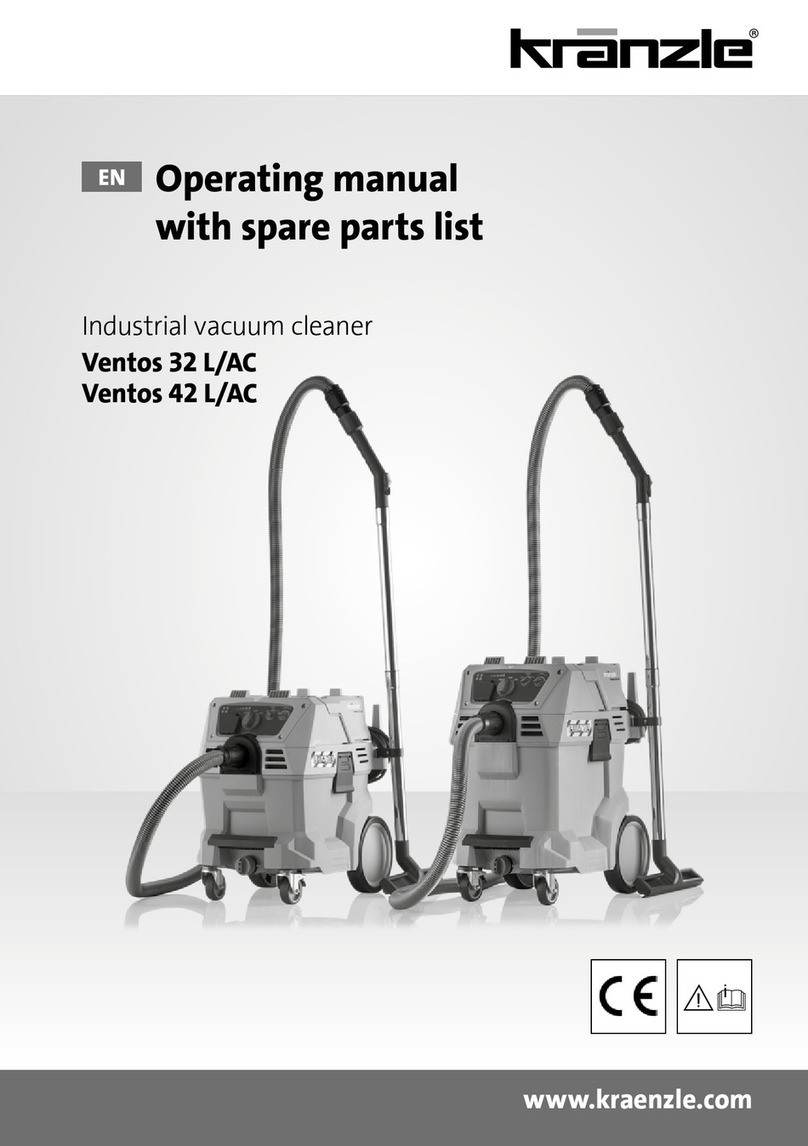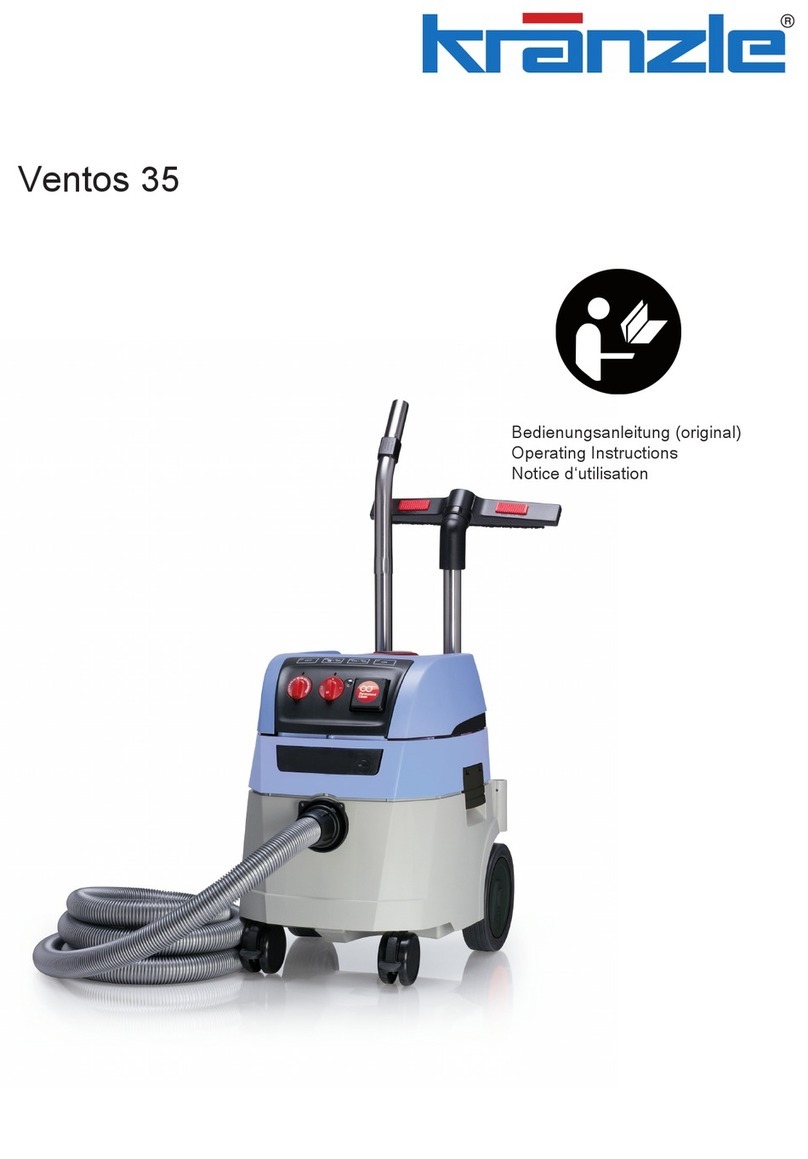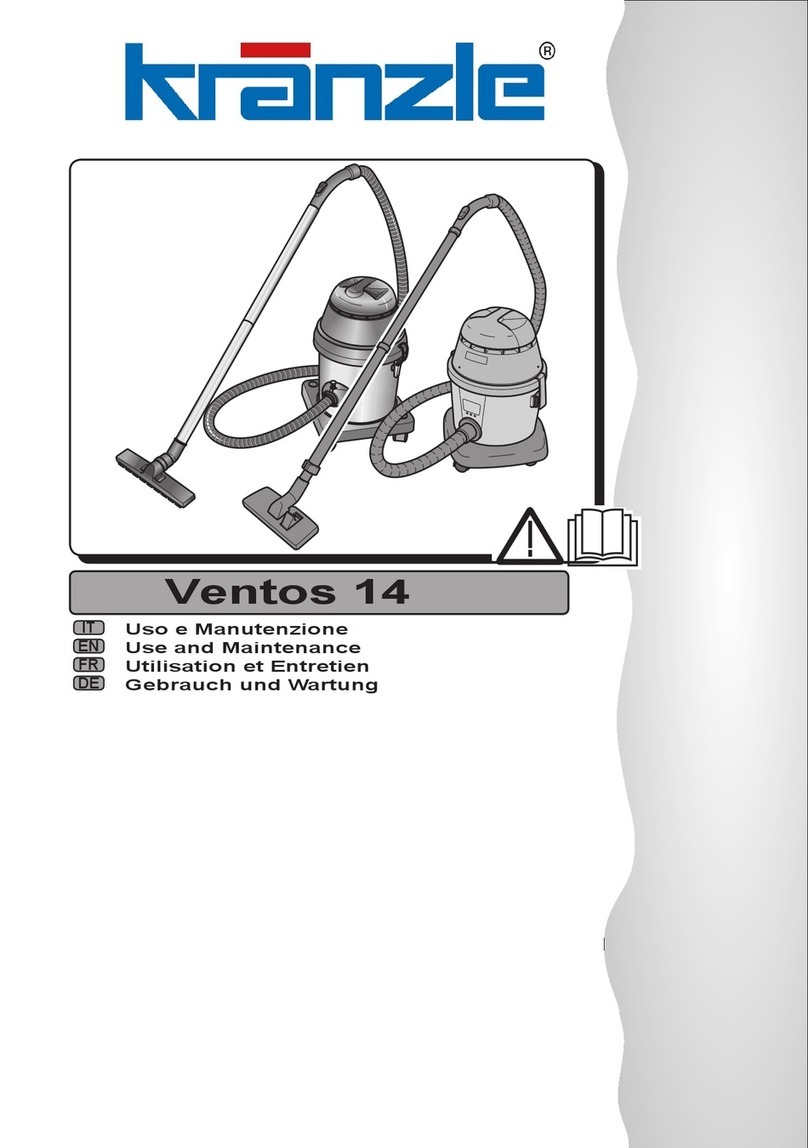
IT
I - 1
CARATTERISTICHE
TECNICHE
Modello con alimentazione di rete
Tensione ..................................... 220-240 V
Potenza motore................................1350 W
Livello sonoro.................................60 dB(A)
Depressione..................................290 mbar
Capacità sacchetto carta....................... 3,3 l
Dimensioni ..............240 x 495h x 202Ø mm
Peso................................................... 4,8 kg
Accessori................................Ø 32 (36) mm
Modello con alimentazione a batteria
Tensione ...............................................24 V
Tensione caricabatterie............... 220-240 V
Potenza motore..................................300 W
Livello sonoro.................................54 dB(A)
Depressione..................................125 mbar
Capacità sacchetto carta....................... 3,3 l
Dimensioni ..............240 x 580h x 202Ø mm
Peso................................................... 7,5 kg
Accessori................................Ø 32 (36) mm
AVVERTENZE DI
SICUREZZA AGGIUNTIVE
Batterie
- Non introducete nei fori di contatto del pac-
co batterie oggetti metallici, in quanto po-
trebbe verificarsi un corto circuito fra i poli.
- Non lasciare il pacco batterie o l’apparec-
chio al sole per parecchi minuti.
- Attenzione! Utilizzate esclusivamente bat-
terie originali; NON manomettere il pacco
batterie e NON rimuovere il sigillo di ga-
ranzia.
- Fare attenzione che le batterie non ricevi-
no urti, l’involucro esterno si potrebbe rom-
pere.
Caricabatterie
- Utilizzate solo il caricabatterie in dotazione
e nessun altro tipo.
Non utilizzare il caricabatterie per caricare
accumulatori o batterie diverse;
potrebbe danneggiarsi.
- Evitare che il cavo di alimentazione del ca-
ricabatterie venga danneggiato o calpesta-
to quando è in funzione.
-Non trascinare il caricabatterie tirando il
cavo.
- Eventuali cavi di prolunga devono avere
una sezione uguale o superiore a quella
del cavo.
- Non tirare il cavo del caricabatterie per
estrarre la spina dalla presa.
Smaltimento batterie
- Non gettare nel fuoco e/o non disperdere
nell’ambiente le batterie esauste ma con-
segnarle agli appositi centri di smaltimento
attenendosi alle indicazioni delle norme in
vigore del paese di utilizzo.
- NON smaltire insieme ai rifiuti domestici.
TIPO D’USO
Utilizzare questo apparecchio solo come
aspirapolvere per aspirare polvere, briciole,
ecc...
Solo per questo utilizzo è stato concepito.
PERICOLO:
Il costruttore non può essere ritenuto re-
sponsabile per eventuali danni dovuti ad
un uso improprio o scorretto.
Qualsiasi altro utilizzo solleva il costrutto-
re da responsabilità per danni a persone
e/o cose e fa decadere qualsiasi condizio-
ne di garanzia.
USO SCORRETTO
Non utilizzare l’apparecchio per:
- Aspirare liquidi di qualsiasi tipo;
- Aspirare sostanze infiammabili, esplosi-
ve, corrosive, tossiche.
- Aspirare sostanze calde.
Non utilizzare l’apparecchio in ambienti con
rischio di esplosione.

